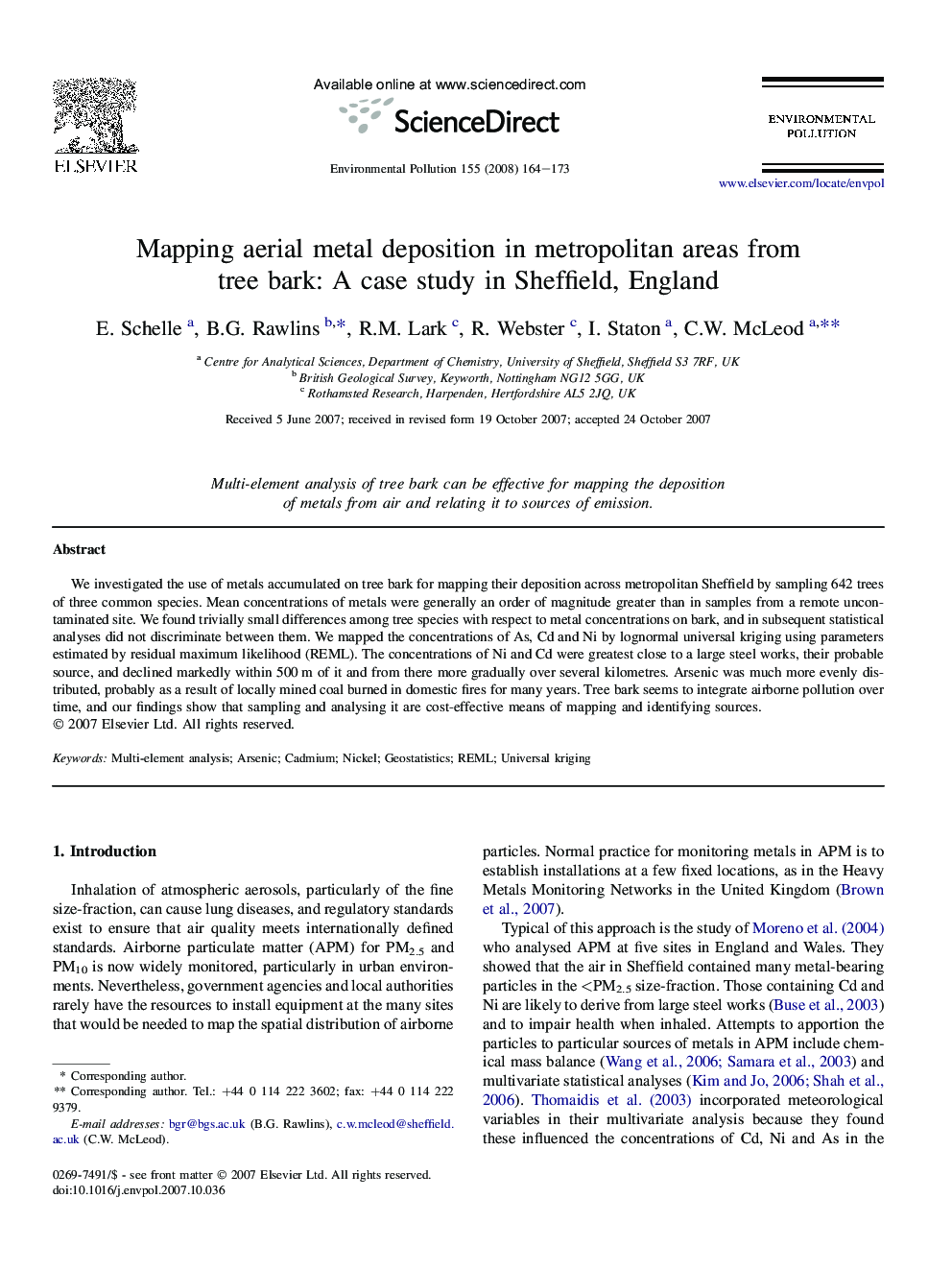| Article ID | Journal | Published Year | Pages | File Type |
|---|---|---|---|---|
| 4426981 | Environmental Pollution | 2008 | 10 Pages |
We investigated the use of metals accumulated on tree bark for mapping their deposition across metropolitan Sheffield by sampling 642 trees of three common species. Mean concentrations of metals were generally an order of magnitude greater than in samples from a remote uncontaminated site. We found trivially small differences among tree species with respect to metal concentrations on bark, and in subsequent statistical analyses did not discriminate between them. We mapped the concentrations of As, Cd and Ni by lognormal universal kriging using parameters estimated by residual maximum likelihood (REML). The concentrations of Ni and Cd were greatest close to a large steel works, their probable source, and declined markedly within 500 m of it and from there more gradually over several kilometres. Arsenic was much more evenly distributed, probably as a result of locally mined coal burned in domestic fires for many years. Tree bark seems to integrate airborne pollution over time, and our findings show that sampling and analysing it are cost-effective means of mapping and identifying sources.
